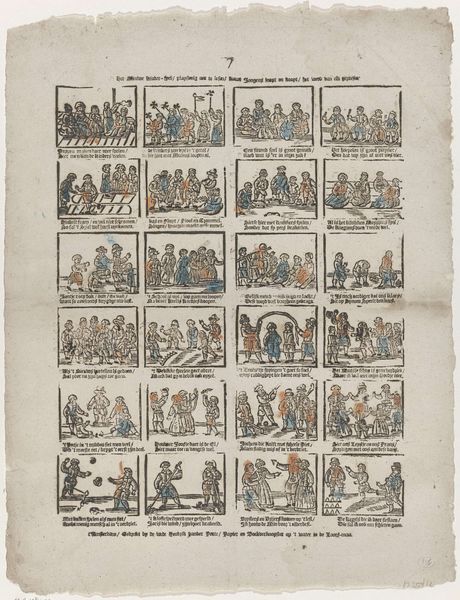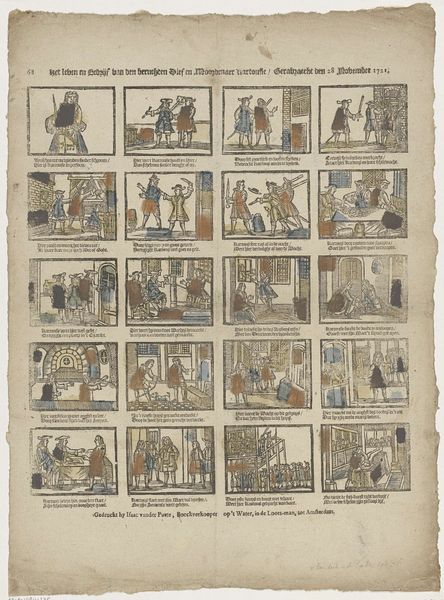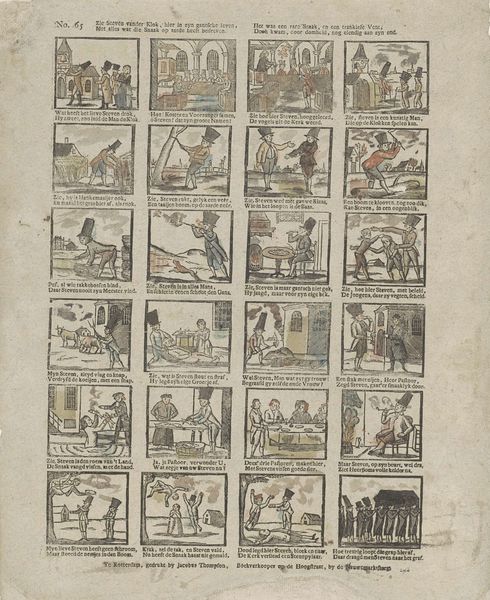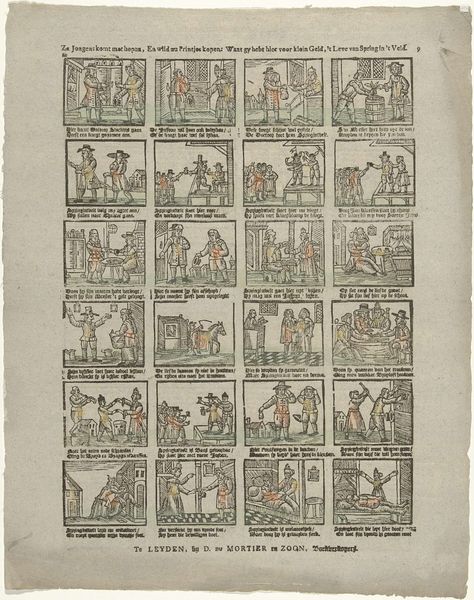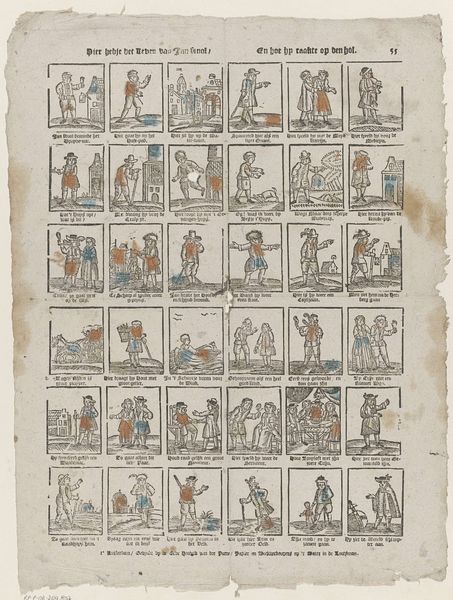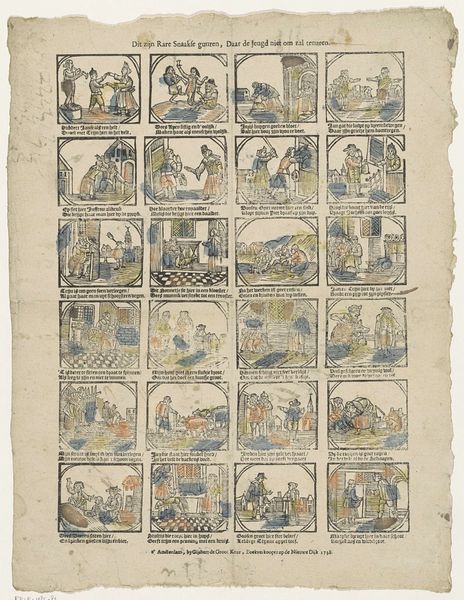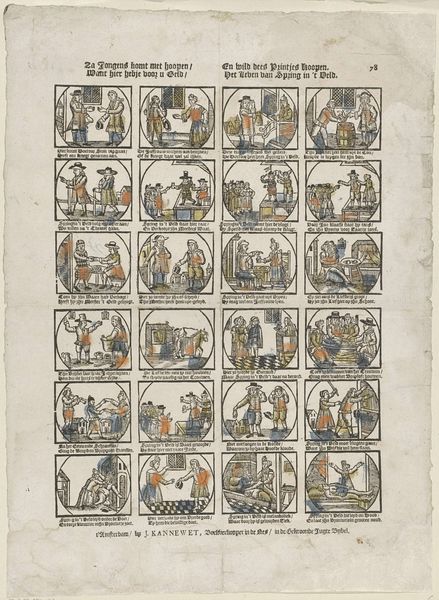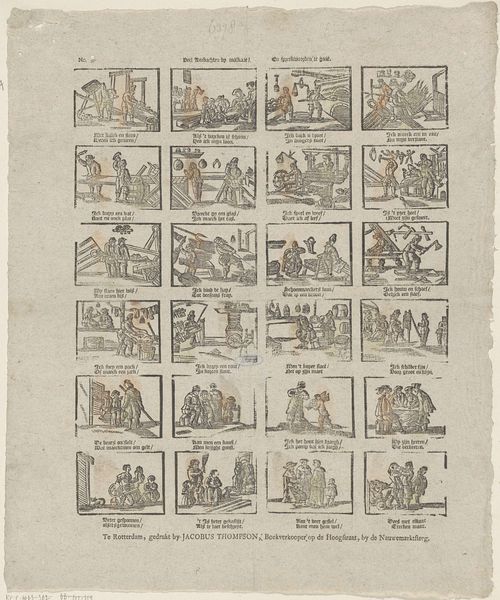
graphic-art, print, etching, engraving
#
graphic-art
#
dutch-golden-age
# print
#
etching
#
genre-painting
#
engraving
Dimensions: height 400 mm, width 310 mm
Copyright: Rijks Museum: Open Domain
Curator: Welcome. We are looking at a print titled "De Amsterdamsche kermis vreugd," or "The Amsterdam Fair Joy" made between 1765 and 1767 by the workshop of weduwe Hendrik van der Putte. It's an etching and engraving, and a great example of genre painting. Editor: Immediately, what strikes me is its organization – it's like a comic strip from the 18th century. All those tiny boxes filled with daily life. It almost seems factory-made because of this grid. Curator: Precisely. These prints, relatively inexpensive, were broadly distributed, shaping popular perceptions. Look closely: each little scene is like a miniature stage set displaying various facets of urban life and revelry in Amsterdam. Editor: You can also see from the materiality—the etching and engraving—this wasn't meant to last, right? Fairground ephemera made to be consumed quickly and discarded like all those sugar treats displayed? Curator: Exactly. And it played a part in shaping a sense of civic identity, defining acceptable social behaviour through the depiction of the city’s vibrant fair and street life. Editor: I like how the scenes document the material culture, from the carts and tools to the clothing. What strikes me are not just the images themselves but what is absent. Labor, particularly lower-class trades, are rarely visible, perhaps glossing over some uncomfortable truths of Amsterdam society? Curator: Indeed. By presenting these moments without overt commentary, it implicitly affirmed a certain social order while engaging with the emerging concept of a public sphere. Also notice the subtle social commentaries implied by the juxtaposition of various social classes in such proximity. Editor: I wonder about the labour and skills to create all those little detail scenes... From an artisan perspective, the making process involved specialized labour. A skilled etcher creates and an engraver works through to bring it to its finished printed form for the consumption of Amsterdam’s middle classes and further abroad. Curator: It offers a fascinating peek into the dynamics of an emerging commercial culture, using accessible art to mould perceptions of daily life. Editor: Overall, looking at this today, its social record tells much, but looking at the skills and distribution gives it a place to sit beyond aesthetics and more into its place in society at that point.
Comments
No comments
Be the first to comment and join the conversation on the ultimate creative platform.

